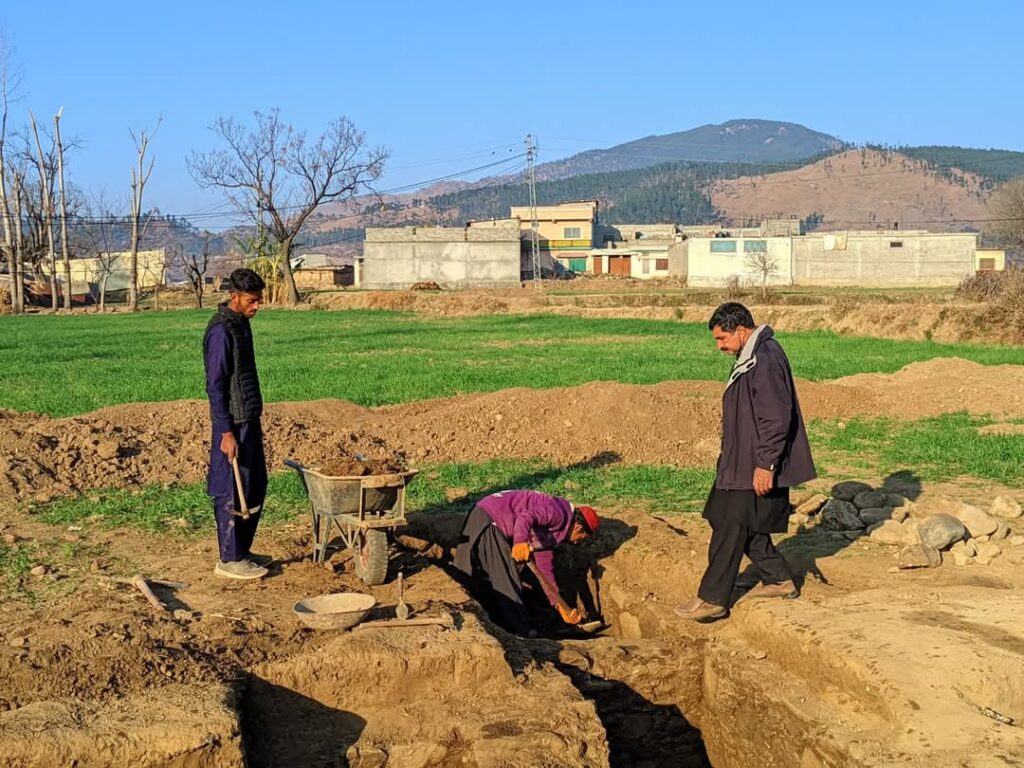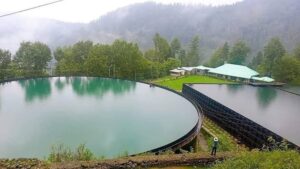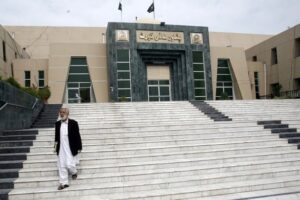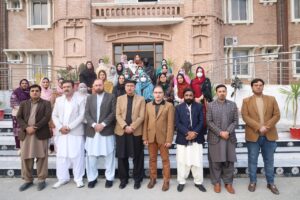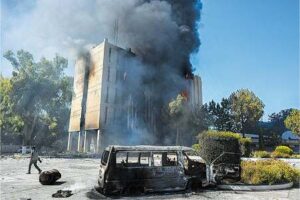On a cool morning in the Hazara district, a team of archaeologists from Hazara University carefully brush away layers of earth, revealing fragments of history buried for over two millennia. This is Kandar Badadi excavation in Shinkiari, Mansehra, now emerging as a site of immense historical significance.
The Kandar Badadi excavation, a joint venture between Hazara University’s Department of Archaeology, the Khyber Pakhtunkhwa Directorate of Archaeology and Museums, and the University of Leicester (UK), is supported by the British Council’s Education Gateway Program and Pakistan’s Higher Education Commission.
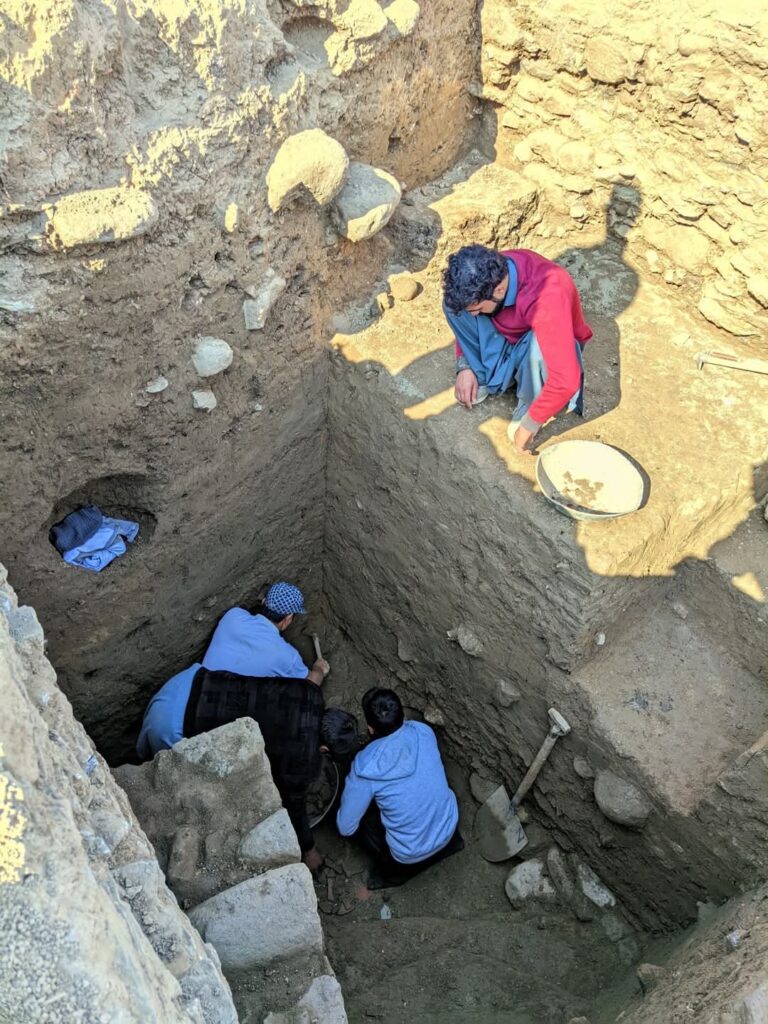
As the team digs deeper, their efforts expose a cultural timeline stretching across five generations. Copper figurines of humans and animals, stone beads, iron tools, and other metal artifacts emerge from the trenches—each a silent witness to a past civilization that thrived in this region. These objects tell a story of a dynamic economy, where copper melting and bead-making were practiced in specialized workshops.
The remnants of these workshops, along with house foundations and walls, suggest a once-flourishing settlement that had mastered both craftsmanship and construction.
“This site is remarkably intact,” Shakir Khan, an official from Hazara University, wrote on Facebook. “We have confirmation of the Indo-Greek period through numismatic and material evidence from the deeper trenches of our excavation.” His post reflects the excitement rippling through Pakistan’s archaeological community. Kandar Badadi excavation, long overshadowed by more famous sites, is proving to be a crucial link in understanding the region’s historical evolution.
The significance of this excavation extends beyond relics and ruins. The discovery of human and animal bones offers insights into the diet and rituals of past societies. The unearthing of Kharosthi-inscribed artifacts—echoing the linguistic influences of ancient empires—suggests the site was once a melting pot of cultures. Previously, a copper-handled cup inscribed in Kharosthi, now housed in the Peshawar Museum, was traced back to Kandar Badadi excavation, hinting at the site’s enduring connection to trade and knowledge exchange. Yet, the excavation is not without its challenges. Much of Kandar Badadi excavation is now occupied by modern housing, limiting the extent of archaeological exploration.
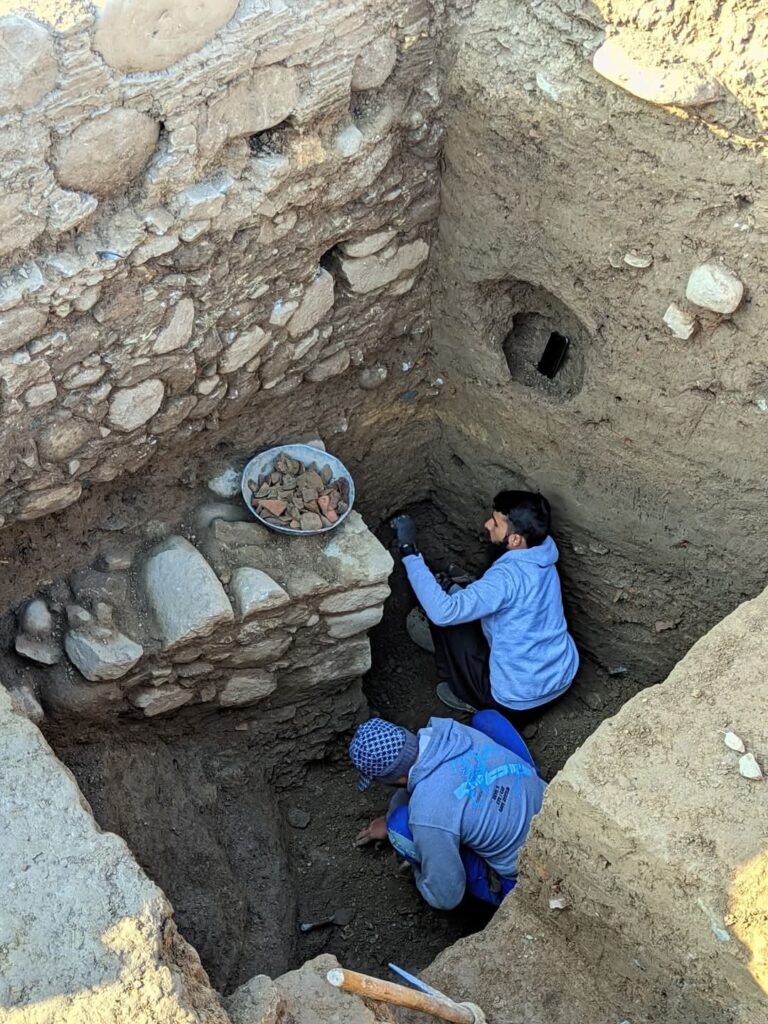
Despite this, enough open land remains for researchers to continue their investigation, carefully navigating the space between past and present. For the students and faculty of Hazara University’s Department of Archaeology, this dig is more than an academic exercise—it is a living classroom. “Our students, scholars, and faculty are deeply involved in the excavation, gaining hands-on field experience,” Khan noted.
Their participation ensures that the next generation of archaeologists is trained not just in theory but in the meticulous practice of uncovering history layer by layer. As the excavation progresses, Kandar Badadi excavation is rewriting its place in history. Once just another village on the Karakoram Highway, it now stands as a crucial archaeological site bridging the Indo-Greek period to the British era.
Each discovery strengthens the argument for preserving and studying this ancient settlement, ensuring that the story of Kandar Badadi excavation is told not just through scattered artifacts but through dedicated scholarship and sustained excavation.

